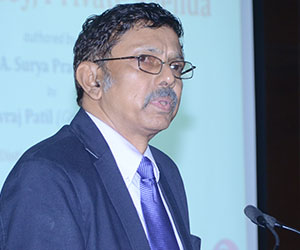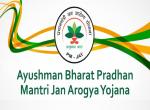Ever since the Congress Party’s crushing defeat in the recent Lok Sabha election, many acolytes of the Nehru-Gandhi family and Congress sympathisers are bemoaning the fact that the leader of this party, which has just 44 seats, cannot be designated Leader of the Opposition (LOP) and consequently, will not be entitled to the status and perks that go with it. Under rules formulated by Mr. G.V.Mavalankar , the first Speaker of the Lok Sabha and followed since then, a party must have at least ten per cent of the strength of the House in order to qualify to be designated as a Parliamentary Party and the leader of the largest such Parliamentary Party in the opposition ranks is designated Leader of the Opposition.
Those who are troubled by the fact that the Sixteenth Lok Sabha will have no recognized Parliamentary Party in the opposition benches and consequently no recognized LOP, because the Congress Party has just 44 MPs, seem to forget that India’s tryst with parliamentary democracy began on this note. Throughout Jawaharlal Nehru’s prime ministership, India never had a Leader of the Opposition because there was no political party which commanded one-tenth of the strength of the Lok Sabha. Similarly, for long years in the Indira Gandhi era too, there was no LOP. Further, there was no LOP in the Lok Sabha when Rajiv Gandhi was Prime Minister.
According to Kaul and Shakdher, “with a view to discouraging multiplication of parties and growth of splinter groups” Mavalankar laid down general principles on which recognition can be given to political parties for their parliamentary work in the Lok Sabha. Mr.Mavalankar was of the view that democracy would not grow on proper lines unless there are a fewer number of parties, “possibly not more than two major parties which can almost balance each other as the Government and the Opposition”.1
The conditions laid down by Mavalankar for an association of members who propose to form a Parliamentary Party in the Lok Sabha are as follows: They must have a distinct ideology and programme which they have announced prior to the election and on which they have been elected and ‘they should form a homogenous unit capable of developing into a well knit entity’; they should have an organization both inside and outside the House, which is in touch with public opinion on all important issues before the country; they should at least be able to command a strength which would enable them to keep the House, that is, their number should not be less than the quorum fixed to constitute a sitting of the House, which is one-tenth of the total membership.2 These principles were later embodied in Direction 121 (1) of the Directions by the Speaker, Lok Sabha.3 Many decades later they were incorporated in The Leaders and Chief Whips of Recognised Parties and Groups in Parliament (facilities) Act, 1998.
In the present case, this means that a political party must have at least 55 MPs (one-tenth of the strength of the Lok Sabha – 543 elected members) to be recognized by the Speaker as a Parliamentary Party. Only the leader of such a Parliamentary Party will be eligible to be recognized as Leader of the Opposition. A political party which satisfies the first two conditions laid down by Mavalankar, but which fails to command the required one-tenth strength, cannot be recognised as a Parliamentary Party. It is recognized as a Parliamentary Group, provided it has 30 MPs. As of now The Congress Party in the Lok Sabha falls in this category.
India got its first Leader of the Opposition in 1969 in the Fourth Lok Sabha – a good 17 years after the first general election held in 1952. Prior to this, no opposition party secured 10 per cent of the seats in Lok Sabha and therefore, there was no LOP in the House throughout Nehru’s prime ministership. In 1969, Dr.Ram Subhag Singh was appointed LOP by the Speaker following the split in the Congress Party. The larger branch of the party was headed by Ms.Indira Gandhi, the Prime Minister. The smaller branch, comprises 60 members of the Lok Sabha, moved to the opposition benches following the split and since they had the requisite numbers, they were declared to be a Parliamentary Party and their leader – Dr.Singh - became India’s first LOP. He remained in office until dissolution of the Lok Sabha in December, 1970. 4
The dissolution came about because Prime Minister Indira Gandhi opted for a snap poll, which was held in early 1971 to constitute the Fifth Lok Sabha. In this election, the Congress Party led by her bagged 352 seats in a House with a strength of 515. However, no political party got the numbers to be recognized as a Parliamentary Party (52 seats or even to be recognized as a Parliamentary Group (30 seats). In that election, the Communist Party of India -Marxist (CPI-M) was the largest party in the opposition benches with 25 seats followed by the Communist Party of India (CPI) with 23 and the Bharatiya Jana Sangh with 22 seats.5
In the historic Lok Sabha election of 1977 for the Sixth Lok Sabha, in which the Congress Party got a drubbing, the Janata Party secured 295 seats (contesting on the Bharatiya Lok Dal symbol) and formed the government. The Congress secured just 154 seats and its leader became the Leader of the Opposition. However, both the ruling Janata Party and the Congress Party saw splits during the tenure of this Lok Sabha. As a result of the Congress split in March, 1978, the Congress (I) with 58 MPs, which owed allegiance to Indira Gandhi was recognized as a Parliamentary Party in addition to the larger segment which also was in the opposition. Thereafter, the Janata Party too split and the breakaway faction – the Janata Party (S) with 68 MPs was recognized as a Parliamentary Party along with the largest segment –the Janata Party – which was then in government.
The Congress Party returned to power with 353 seats in the Seventh Lok Sabha constituted in 1980 and Indira Gandhi again returned as Prime Minister. Here again, there was no recognized Leader of the Opposition because the largest party was the Janata Party (S) with 41 seats, followed by the CPI(M) with 37 seats and the Janata Party with 31 seats. 6
The election to the Eighth Lok Sabha was held a few months after Indira Gandhi’s assassination. In that election, the Congress Party led by Rajiv Gandhi won a massive 404 seats. Most of the parties in the opposition, specially the so-called national parties, were decimated. The Bharatiya Janata Party won two seats and the Janata Party just 10. The CPI(M) secured a credible 22 seats. As a result, the Telugu Desam, which bagged 30 seats became the largest party in the opposition ranks. However, no party qualified to be designated a Parliamentary Party. The Telugu Desam, however, just managed to meet the criteria to be classified as a Parliamentary Group. The TDP lost this status when an MP left the party in 1988.7
In the Ninth Lok Sabha election, the Congress faced defeat following the Bofors Payoffs Scandal. It secured 197 seats and Rajiv Gandhi became the LOP. The Janata Dal with 141 MPs formed the government along with the support of the BJP and the Left parties. In the Tenth Lok Sabha, the Congress returned to power heading a minority government with 232 seats. Part of this election was held after Rajiv Gandhi’s assassination and the improved performance of the party, as compared to the previous election, was attributed to the tragic development. However, this election saw a non-Congress Party – the BJP – secure 120 seats and its leader the LOP status. Another party in opposition that crossed the ten per cent hump was the Janata Dal with 59 seats.8
In the Eleventh Lok Sabha election, the Congress bagged 140 seats and propped up a political pot pourri to form a government. The BJP with 161 held the LOP position. The Twelfth Lok Sabha formed in 1998 saw the BJP coming to power in alliance with several regional parties. The Congress secured 141 seats and returned to its status as a Parliamentary Party in the opposition ranks. This Lok Sabha was dissolved in just a year after the Atal Behari Vajpayee –led coalition was defeated by The Congress and its allies by one vote. The people voted the BJP led National Democratic Alliance back with a vengeance in 1999 and the Congress Party hit a low with just 114 seats. However, it had enough to ensure that its leader was the LOP in the Thirteenth Lok Sabha.9
The Fourteenth and Fifteenth Lok Sabhas saw the Congress coming to power in association with its allies under the United Progressive Alliance (UPA) umbrella. The BJP secured 145 and 116 seats in these Lok Sabhas and retained the LOP status. The cycle of success and defeat caught up with the Congress once again in the election to the Sixteenth Lok Sabha, but this time its fortunes have really nosedived and it won just 44 seats. Meanwhile the BJP has secured a handsome victory with 282 seats. The Congress Party, however, will be eligible to be recognized as a Parliamentary Group since it has over 30 seats. Two other parties which will claim the status of Parliamentary Groups in this Lok Sabha are the All India Anna Dravida Munnetra Kazhagam (AIADMK) with 37 MPs and the All India Trinamool Congress with 34 MPs.10
What this shows is that whenever the Congress won the parliament elections handsomely, the opposition got a severe drubbing and no opposition party managed to secure even ten per cent of the seats to be entitled to the status of LOP. On the other hand, whenever the Congress Party was defeated as in 1977, 1989, 1996, 1998 and 1999, it won enough seats for it to be designated as a Parliamentary Party. However, the Modi Wave has blotched the Congress Party’s copybook. For the first time since the Lok Sabha was constituted in 1952, the party has failed to secure enough seats to be designated as a Parliamentary Party. Also, for the first time since 1952, a single party has comprehensively trounced the Congress and this could be the reason why the Congress has suffered the fate that awaited its opponents from 1952 to 1971 and again in 1971, 1980 and 1984. This is why people have begun to re-designate the phenomenon that routed the Congress. They say it was not a wave, it was a tsunami!
References:
- p. 313, M.N.Kaul and S.L.Shakdher, Practice and Procedure of Parliament, Published for Lok Sabha Secretariat, Metropolitan Book Company Pvt.Ltd, New Delhi, Fourth Edition, 1991
- Ibid
- Directions by the Speaker, Lok Sabha – See http://parliamentofindia.nic.in/ls/direct/dirp9.html
- p. 314, M.N.Kaul and S.L.Shakdher, Practice and Procedure of Parliament, Published for Lok Sabha Secretariat, Metropolitan Book Company Pvt.Ltd, New Delhi, Fourth Edition, 1991
- p76, http://eci.nic.in/eci_main/StatisticalReports/LS_1971/Vol_I_LS71.pdf
- p 314, M.N.Kaul and S.L.Shakdher, Practice and Procedure of Parliament, Published for Lok Sabha Secretariat, Metropolitan Book Company Pvt.Ltd, New Delhi, Fourth Edition, 1991
- Ibid, p. 315
- p.10, http://eci.nic.in/eci_main/StatisticalReports/LS_1992/GE_VOL_I_92.pdf
- p.90, http://eci.nic.in/eci_main/StatisticalReports/LS_1999/Vol_I_LS_99.pdf
- http://eciresults.nic.in/
Published Date: 23rd May 2014, Image source: https://churumuri.files.wordpress.com











Post new comment